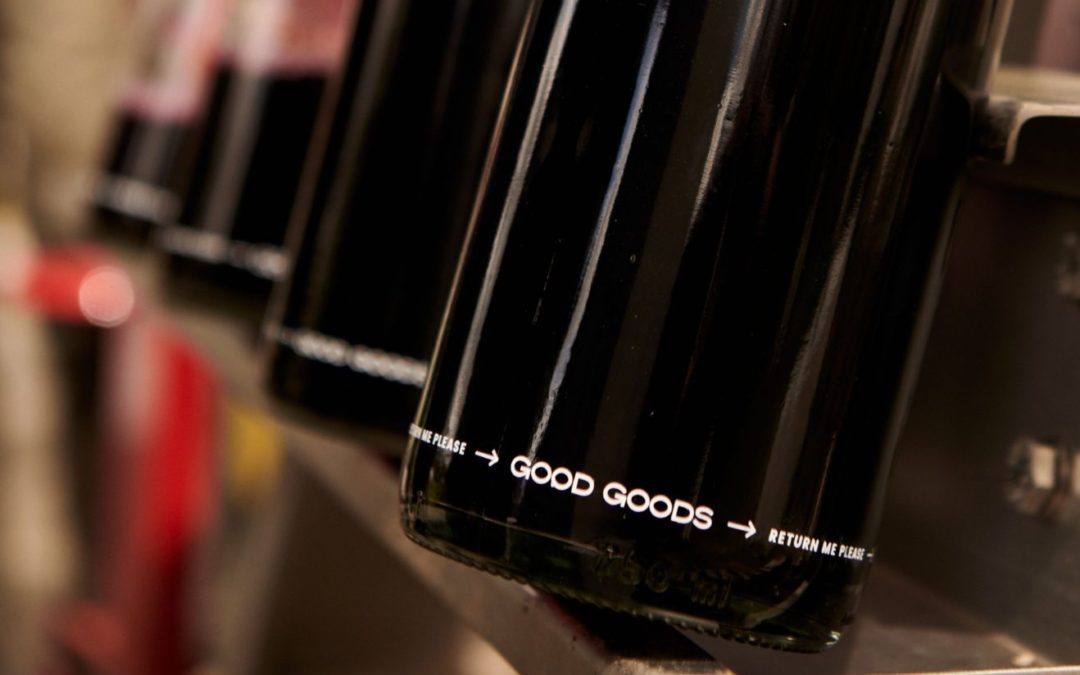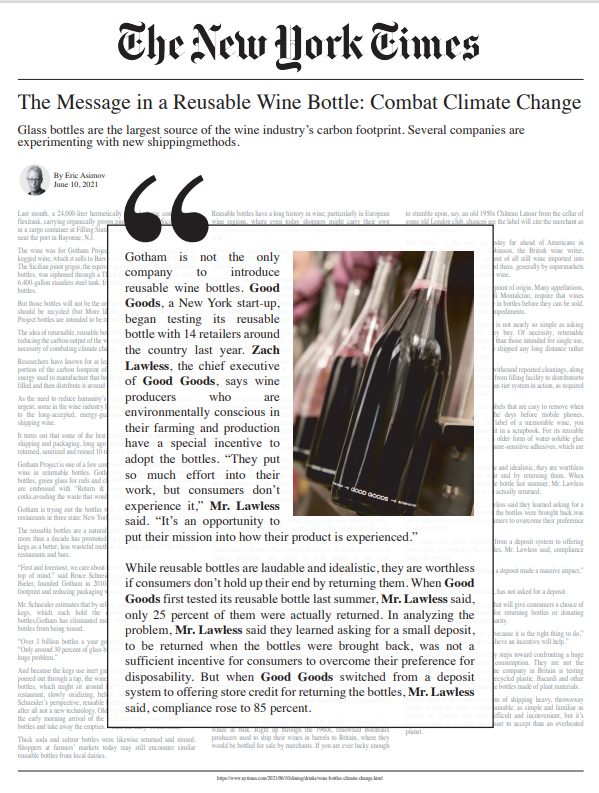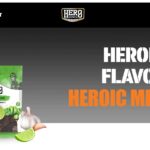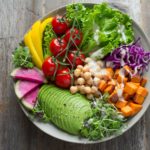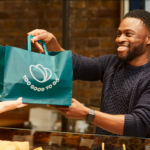For almost a decade, I worked in the wine industry for Nomacorc, now Vinventions, a closure (cork) company. In the beginning, Nomacorc’s closures were made from traditional fossil fuel-based polymers and resins. As you can imagine, we were extremely sensitive to environmental and sustainability issues.
Then our R&D team uncovered that we could produce our synthetic wine closures from a biopolymer made from sugar cane. Imagine a plant-based solution for the wine industry. We called it Plantcorc, and I’m proud to have named that product line.
We created a cork recycling project with retailers like Specs, ABC, and BevMo! Our approach was to collect used corks and UPCYCLE the products into new products like trivets and other decorative gifts made from used corks. And with the proceeds, we provided funds to the retailers they could use for local community contributions.
Zach & The Good Goods Guys
When Zach Lawless first connected with me for some advice about his start-up, I was curious to understand more about Good Goods.
Zach ran Fresh Bowl in NYC, a company that provided fresh meals served from kiosks that would accept back the used packaging to be washed, cleaned, and reused.
Covid closed the offices where people would purchase these meals, so he pivoted toward wine bottle reuse. Good Goods is his newest venture.
When he first expressed the idea to me, I knew I heard an intriguing challenge – why don’t we recycle glass wine bottles?
More than 70% of wine bottles end up in landfills, with the remaining bottles getting crushed to be recycled into other glass products. But a wine bottle is sturdy enough to be used more than once, and a closed-looped system could take BILLIONS of wine bottles out of our landfills.
I always recycle my wine bottle into the local program for glass, but frankly, I don’t know what happens to those empty bottles. I told Zach that I’d bring my empties back to Whole Foods Market or Total Wine where I purchase wine for a modest credit worth about a buck.
A Simple Idea
I’m old enough to remember my family getting milk delivered in glass bottles, and we would leave the empties for the milkman to take back to the dairy for reuse. Milk home delivery in glass is returning in many markets.
Could wine bottles follow a similar path for reuse through retail?
Globally, almost 20 billion 750 ml bottles of wines are produced each year, with about 5 billion in the U.S. It takes an enormous amount of energy to produce and transport those bottles to the winery. Imagine if a small percentage of the glass wine bottles could be reused a few times?
The positive impact on the environment would be significant.
A recent NY Times article by Eric Asimov featured Good Goods along with another company also focused on the reuse issue in the wine category. Another story by Dr. Vino (Tyler Coleman) also tells the Good Goods story in Wine & Spirits.
A German NGO has created a return program for plastic, but the economics and model are different.
In Sweden, a wine glass bottle return system also existed but was ultimately stopped when the state, which controls regulated products like wine, moved toward the use of alternative packaging like boxes.
And in Provence in the south of France, there has been some interest in wine bottle reuse.
Zach’s idea is simple – like all great ideas.
If you purchase a bottle of wine from a retailer, you can return it to the store for a credit on your smartphone. Good Goods created an app that allows you to scan a QR code on a bottle that links the credit to your phone. Then, when you buy another bottle of wine in the program, you can get $1 credit toward a purchase. Technically, you are getting a bottle refund returned when you use the app.
To test Good Goods’ hypothesis, ten independent retailers in NYC signed up to participate in the program. Henry’s Wine and Spirits, Gotham Wine and Liquor, The Gilded Grape, and The Natural Wine Company are a few retailers participating in the test.
Their goal is to create a wine bottle with the Good Goods logo and key reuse message embossed, printed, or etched on the bottle. So far, more than 5,000 consumers have signed up for the program, and a remarkably high rate have returned their empty wine bottles and repurchased more wine from participating stores. Special sections or point of sale materials were created in some stores to help tell the Good Goods reuse story.
How Good Goods Works:
- Wine producers fill the Good Goods bottle with their wine.
- The bottle has ‘Good Goods’ embossed on the base to indicate to customers that this bottle can be returned and reused.
- The wine is sold to retailers, and Good Goods activates the program at retail locations.
- Customers receive credit (i.e., one dollar) via SMS for returning the Good Goods bottle.
- Customers can redeem this credit on future purchases at the retailer.
- Good Goods handles the credit management system and reimburses the retailer for all credits redeemed.
Reuse is a product attribute that serves as a point of differentiation to drive sales and customer engagement. Reusable packaging is being adopted across multiple product segments from large CPG companies to grab and go cups at Starbucks. Wine bottles are already durable, and Good Goods can enable reuse to reduce the environmental impact of wine packaging while rewarding customers, amplifying brand equity, and driving loyalty for retailers.
The Other Added Value
As intriguing as Zach’s idea is for wine bottle reuse, a second component captured my imagination. Consumer goods brands and wineries typically don’t know who buys their products.
Unless they sell DTC (direct to consumer), they sell truckloads of goods to retailers, but the data remains with the retailer. With the Good Goods app, you can capture consumer data and a winery, with the consumers’ permission, begin communicating with them. Wineries focus more on building relationships with wineries, and this app could be an essential conduit in those connections.
The Next Step
In advising the Good Goods team, I have been reaching out to my friends and contacts in the wine industry to get their input on proceeding. We received invaluable information from folks who combined have more than one hundred years of experience in this space.
Logistically, there are numerous hurdles, but Zach & the crew are highly motivated both by a desire to remove waste from landfills and to create a closed-loop system that doesn’t yet exist. They see wine as a steppingstone into other categories, too, since liquor, beer, and different varieties are also clogging up the landfills.
The economics of this business model centered on selling their glass bottles to producers to fill and reuse. And as we gleaned some keen insights from the interviews conducted, we heard two things – “man, this is going to be hard, but you are on to a big idea.”
I’m excited to be advising and participating in this project and will report results in about six months. Stay tuned.
What happens to your empty wine bottles when you recycle them?
Would you participate in a reuse program?
